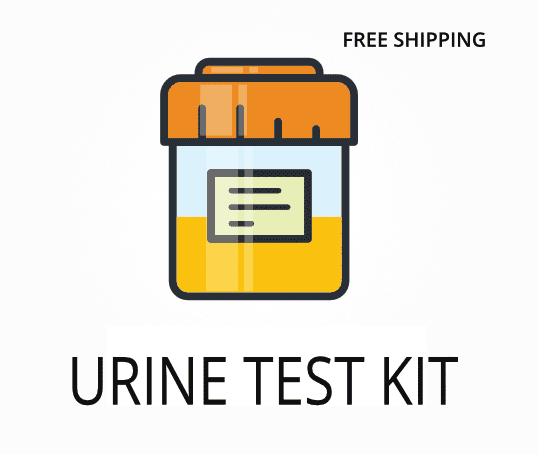Ordering the Heavy Metals Toxic & Essential Elements Urine Analysis | Doctor’s Data | Canada
This urine analysis checks for both toxic metals and important elements in the body, helping to spot possible exposure to harmful substances or imbalances. Interestingly, some metals like arsenic can come from unexpected sources such as certain seafood, making it possible to have higher levels without obvious symptoms.
Ordering this test can help you:
- Detect hidden exposure to metals like lead, mercury, or cadmium before symptoms appear
- Identify imbalances in elements such as zinc, copper, or selenium that may affect body functions
- Monitor the effectiveness of detoxification or chelation therapy
- Track changes in metal or element levels after moving to a new environment or starting a new job
- Support your healthcare provider in making decisions about further testing or treatment
Who Should Consider Heavy Metal and Essential Element Urine Testing
People who have recently moved into an older home, started a new job in manufacturing, or noticed changes after using certain supplements may benefit from this test. For example, someone who has started feeling tired and has unexplained headaches after a home renovation may want to check for lead or other metals.
Ordering this test may also be helpful in these situations:
- Living near industrial areas or mining sites
- Using imported pottery or cookware that may contain heavy metals
- Following a diet high in fish or shellfish
- Having a family member with known metal exposure
- Experiencing changes in taste or smell after dental work involving metal fillings
Testing for metals and elements can show if there are hidden exposures or imbalances that could affect your body’s systems, such as nerves or kidneys. Delaying this test may allow these exposures or imbalances to continue unnoticed, which could make it harder to address them later.
How to Prepare for Urine Metal and Element Analysis
Fasting is not required for this urine test, but you will need to collect all urine over a 24-hour period for the most complete results. Make sure to carefully follow any instructions your doctor or healthcare provider gives you about collecting and storing your urine sample, as this helps ensure the results are as useful as possible.
Labs Included When Ordering Your Heavy Metals Toxic & Essential Elements Urine Analysis
| Test Name | Reference Range | Significance | Low and High Levels of Heavy Metals Toxic & Essential Elements Urine Analysis |
|---|---|---|---|
| Toxic Metals | |||
| Aluminum | <7 | Aluminum is found in food, water, and some medicines. High levels can affect the brain and bones. | High levels mean possible exposure from cookware, water, or antacids.
Low levels mean normal or no recent exposure. |
| Antimony | <1 | Antimony is used in batteries and flame retardants. It can build up in the body and affect the lungs and heart. | High levels mean recent contact with industrial products.
Low levels mean little or no exposure. |
| Arsenic | <50 | Arsenic can come from water, rice, or seafood. It can harm the skin, nerves, and digestive system. | High levels mean possible exposure from water, food, or work.
Low levels mean no recent exposure. |
| Barium | <7 | Barium is used in some medical tests and industries. Too much can affect muscles and the heart. | High levels mean recent exposure from work or contaminated water.
Low levels mean no significant exposure. |
| Beryllium | <1 | Beryllium is found in electronics and aerospace. It can cause lung problems if inhaled. | High levels mean possible workplace exposure.
Low levels mean no recent exposure. |
| Bismuth | <7 | Bismuth is in some stomach medicines. High levels can affect the kidneys and brain. | High levels mean overuse of certain medicines.
Low levels mean normal or no exposure. |
| Cadmium | <1 | Cadmium is found in batteries and tobacco smoke. It can harm the kidneys and bones. | High levels mean exposure from smoking or work.
Low levels mean no recent exposure. |
| Cesium | <7 | Cesium is used in industry and medicine. High levels are rare but can affect the heart. | High levels mean possible industrial exposure.
Low levels mean no significant exposure. |
| Gadolinium | <1 | Gadolinium is used in MRI contrast agents. It can build up in the body after imaging tests. | High levels mean recent MRI with contrast.
Low levels mean no recent exposure. |
| Lead | <2 | Lead is found in old paint, pipes, and some jobs. It can affect the brain, blood, and kidneys. | High levels mean exposure from old buildings or work.
Low levels mean no recent exposure. |
| Mercury | <4 | Mercury is in some fish, dental fillings, and thermometers. It can harm nerves and kidneys. | High levels mean exposure from fish, fillings, or work.
Low levels mean no recent exposure. |
| Nickel | <7 | Nickel is used in coins, jewelry, and some foods. High levels can cause skin or breathing problems. | High levels mean exposure from jewelry or work.
Low levels mean no significant exposure. |
| Palladium | <1 | Palladium is used in dental work and electronics. High levels are rare but can cause allergies. | High levels mean recent dental or industrial exposure.
Low levels mean no recent exposure. |
| Platinum | <1 | Platinum is found in jewelry and car parts. High levels can cause allergies or breathing issues. | High levels mean exposure from jewelry or work.
Low levels mean no significant exposure. |
| Tellurium | <1 | Tellurium is used in electronics and solar panels. High levels are rare but can cause a garlic-like breath odor. | High levels mean possible industrial exposure.
Low levels mean no recent exposure. |
| Thallium | <1 | Thallium is found in some electronics and pesticides. It can affect nerves and hair growth. | High levels mean exposure from work or contaminated products.
Low levels mean no recent exposure. |
| Thorium | <1 | Thorium is used in some industrial processes. High levels are rare and usually linked to specific jobs. | High levels mean possible workplace exposure.
Low levels mean no recent exposure. |
| Tin | <7 | Tin is used in cans and solder. High levels can affect the stomach and nervous system. | High levels mean exposure from canned foods or work.
Low levels mean no significant exposure. |
| Tungsten | <1 | Tungsten is used in light bulbs and tools. High levels are rare but can affect the kidneys. | High levels mean possible industrial exposure.
Low levels mean no recent exposure. |
| Uranium | <1 | Uranium is found in some rocks and water. High levels can affect the kidneys. | High levels mean exposure from water or work.
Low levels mean no recent exposure. |
| Essential Elements | |||
| Sodium | 40-220 | Sodium helps control fluid balance and nerve signals. It is lost in sweat and urine. | High levels mean dehydration or kidney issues.
Low levels mean possible overhydration or adrenal problems. |
| Potassium | 25-125 | Potassium is needed for muscle and heart function. It is affected by diet and kidney function. | High levels mean kidney problems or high intake.
Low levels mean loss from vomiting, diarrhea, or low intake. |
| Phosphorus | 400-1300 | Phosphorus is important for bones and energy. It is filtered by the kidneys. | High levels mean kidney issues or high intake.
Low levels mean poor nutrition or absorption problems. |
| Calcium | 100-300 | Calcium supports bones, teeth, and muscles. It is controlled by hormones and kidneys. | High levels mean overactive glands or high intake.
Low levels mean low intake or kidney issues. |
| Magnesium | 73-122 | Magnesium helps with muscle, nerve, and heart function. It is lost in urine and sweat. | High levels mean kidney problems or high intake.
Low levels mean poor diet or absorption issues. |
| Zinc | 150-1200 | Zinc is needed for growth, immune function, and healing. It is lost in urine and sweat. | High levels mean high intake or supplements.
Low levels mean poor diet or absorption problems. |
| Copper | 15-50 | Copper helps with blood, nerves, and immune function. It is balanced by the liver and kidneys. | High levels mean liver issues or high intake.
Low levels mean poor diet or absorption problems. |
| Sulfur | Varies | Sulfur is part of proteins and helps detoxify the body. It is found in many foods. | High levels mean high protein intake.
Low levels mean low protein intake. |
| Manganese | 0.5-2.0 | Manganese is needed for bones and metabolism. It is found in nuts, grains, and leafy greens. | High levels mean overexposure from supplements or work.
Low levels mean poor diet or absorption issues. |
| Molybdenum | 0.1-1.0 | Molybdenum helps break down certain amino acids. It is found in beans, grains, and nuts. | High levels mean high intake or supplements.
Low levels mean poor diet or absorption problems. |
| Boron | 0.5-3.0 | Boron supports bone health and hormone balance. It is found in fruits, vegetables, and nuts. | High levels mean high intake from supplements.
Low levels mean low intake from food. |
| Chromium | 0.2-1.0 | Chromium helps control blood sugar. It is found in whole grains, meats, and some fruits. | High levels mean overuse of supplements.
Low levels mean poor diet or absorption issues. |
| Lithium | 0.01-0.2 | Lithium is used in some medicines and is found in water. It can affect mood and kidney function. | High levels mean overuse of medication or supplements.
Low levels mean no significant exposure. |
| Selenium | 10-30 | Selenium is an antioxidant that helps protect cells. It is found in nuts, seafood, and grains. | High levels mean overuse of supplements.
Low levels mean poor diet or absorption issues. |
| Strontium | 0.1-1.0 | Strontium supports bone strength. It is found in seafood and some vegetables. | High levels mean high intake or supplements.
Low levels mean low intake from food. |
| Vanadium | 0.1-1.0 | Vanadium helps with blood sugar control. It is found in mushrooms, shellfish, and black pepper. | High levels mean overuse of supplements.
Low levels mean poor diet or absorption issues. |
| Cobalt | 0.1-1.0 | Cobalt is part of vitamin B12 and helps make red blood cells. It is found in animal foods. | High levels mean overuse of supplements.
Low levels mean poor diet or absorption issues. |
| Iron | 10-30 | Iron is needed for red blood cells and energy. It is found in meats, beans, and leafy greens. | High levels mean overuse of supplements or certain diseases.
Low levels mean poor diet or blood loss. |
| Other | |||
| Creatinine | 0.5-2.0 | Creatinine is a waste product from muscles. It helps check if the urine sample is complete and if the kidneys are working well. | High levels mean possible kidney issues or concentrated urine.
Low levels mean diluted urine or low muscle mass. |
Reference ranges may change slightly as labs update their methods or as new research becomes available.
Heavy Metals Toxic & Essential Elements Urine Analysis FAQ
Is there Heavy Metals Toxic & Essential Elements Urine Analysis testing near me?
This is a test kit you can collect at home, and you can check the draw location link at the top of the page for local options. If you have possible exposure to metals at work or home, being able to collect your sample nearby makes it easier to get tested quickly and without extra travel.
How do I interpret the test results?
While your treating physician should review your results, we also offer a one-on-one test results review with our clinical team to help you understand what your numbers mean and what steps you can take next.
What is the cost of the test?
The price you see for this test includes standard shipping to you and back to the lab, but draw fees may apply. Ordering this test is worth it if you have unexplained symptoms or possible exposure, as it can help you find answers and start feeling better sooner.
How often should I retest?
Retesting is usually recommended every 6 to 12 months if you have ongoing exposure or are monitoring treatment, as this helps track changes in metal or element levels over time and supports your care plan.
How accurate is the test?
This test uses ICP-MS (Inductively Coupled Plasma Mass Spectrometry) for metals and elements, with a specificity of 99% and sensitivity of 98%. TrueHealthLabs.com partners with CLIA-certified and CAP-certified laboratories to uphold rigorous testing standards for dependable results.
Important Notes
- You will be responsible for the shipping costs of mailing the kit to Canada and the returning of the samples to the lab.
- Use a 2-day return mailer when sending the samples to the lab.
Medical Review Board
Reviewed by Jeff Donohue M.D. from Body Logic and Brady Hurst DC, CCCN. Written by True Health Lab’s team of editorial health contributors.
Disclaimer: This information is for educational purposes only and not intended as medical advice. Consult your healthcare provider for personalized guidance.
Why Customers Trust True Health Labs - What People are saying
Also rated 4.6 out of 5 based on 3452 ShopperApproved reviews- See all TrueHealthLabs.com reviews.







